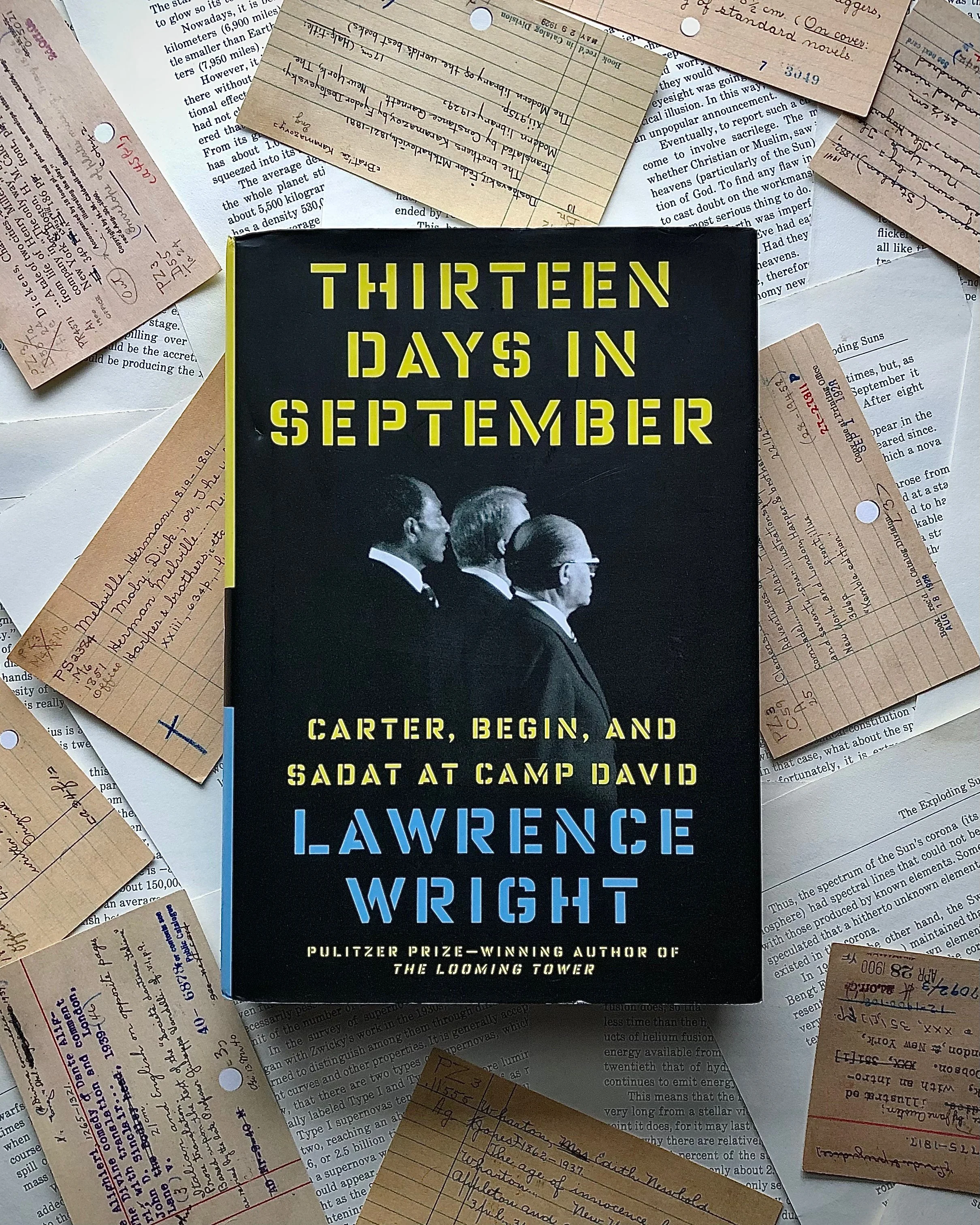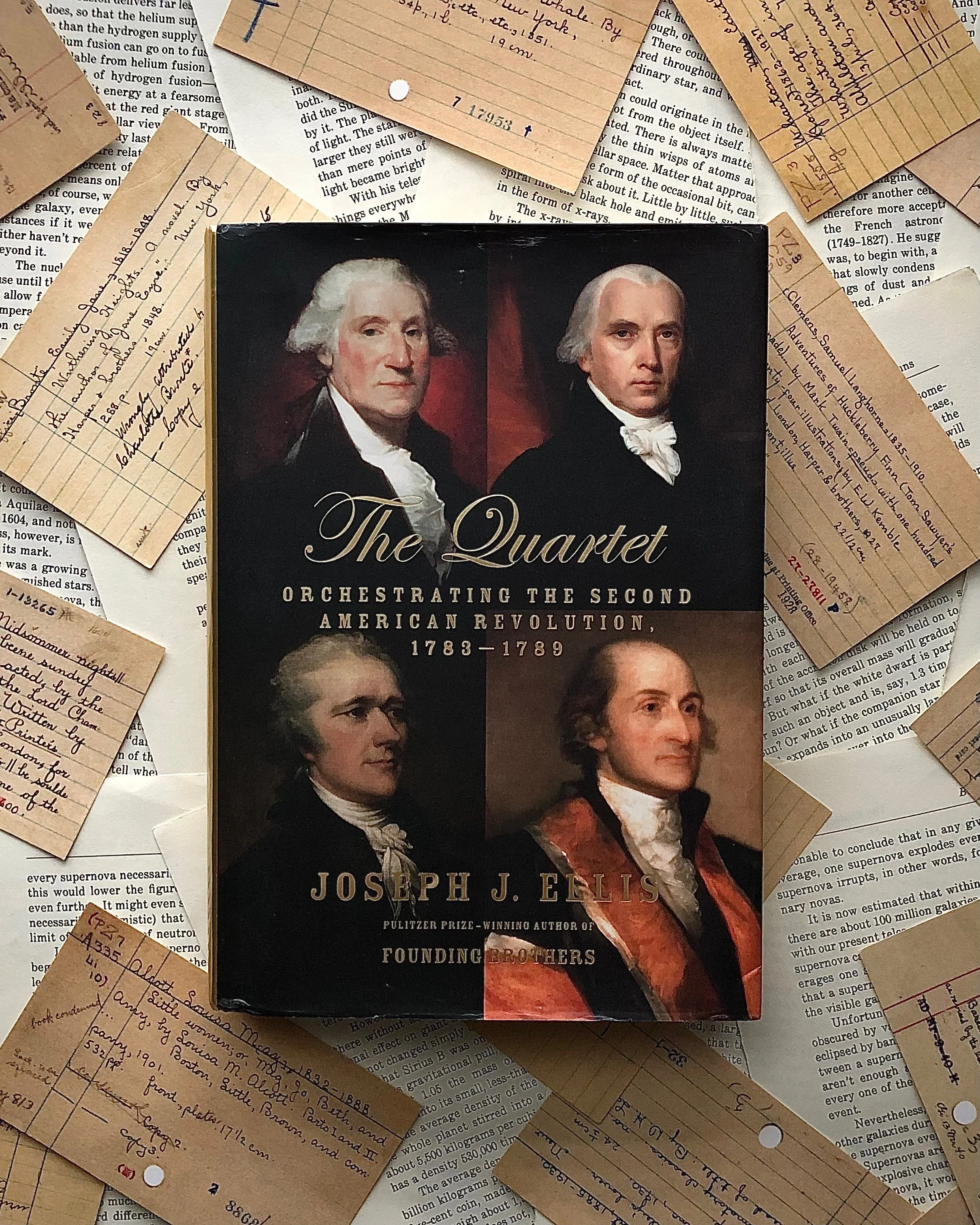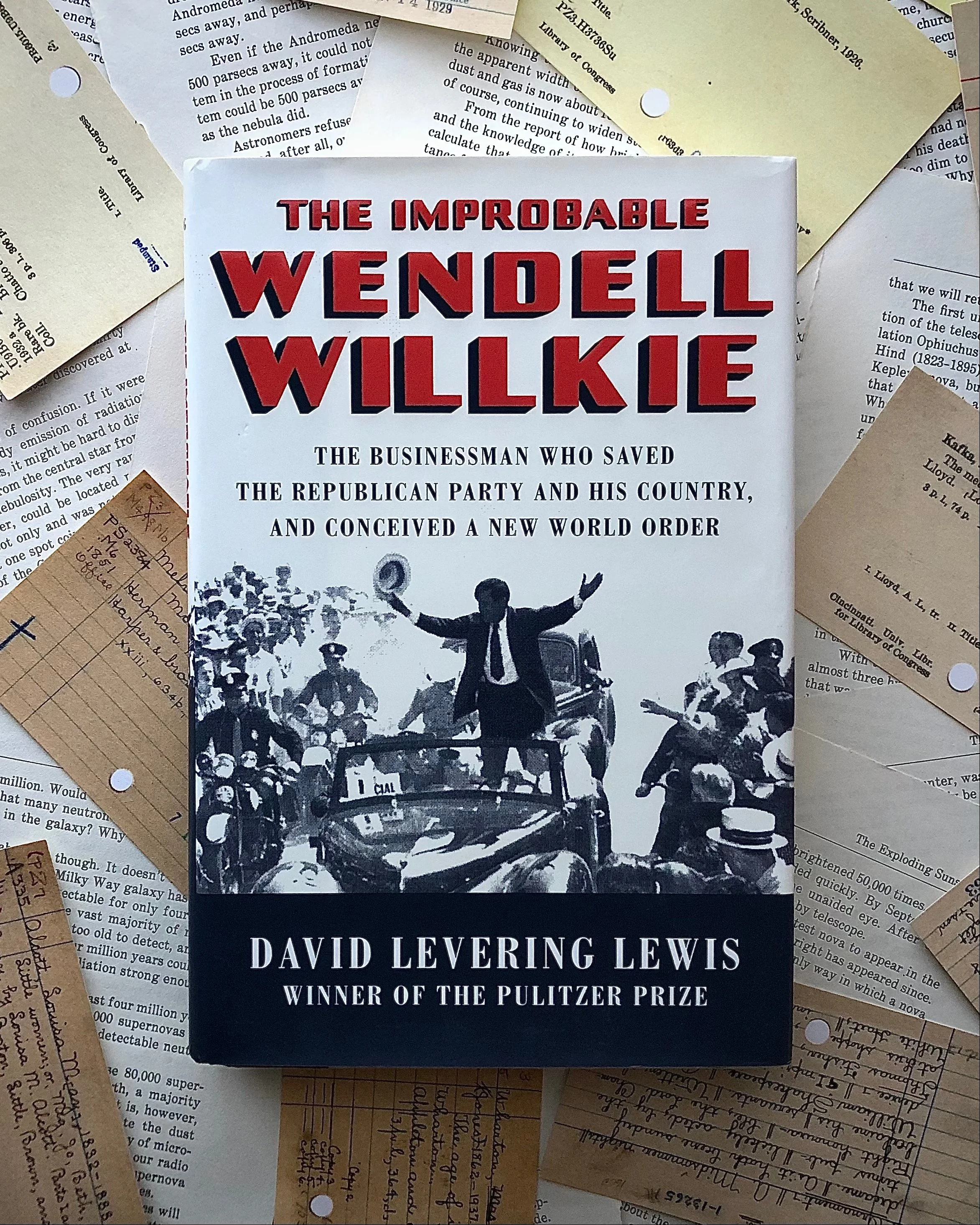Introduction
This month marks the 249th anniversary of the founding of the United States of America, and this fact continually played in my mind when I traveled to Washington, D.C. for a vacation with my wife and a friend over the fourth of July weekend. They had never been to the nation’s capital before, so it was a joy to take them around the city and show them all the monuments on the national mall. Seeing them react to the Lincoln Memorial or the Franklin Delano Roosevelt Memorial, tributes to great presidents carved in the land, reminded me of why I became a public historian and a specialist in American history.
The novelist and essayist Gore Vidal once remarked that, “my subject is America,” and I, too, have devoted my life to understanding the United States. And like Vidal, I often research and write about American history in the form of immanent critique, which underscores the difference between the nation’s ideals of liberty and equality and its actual manifestations of power. The following book reviews cover the complex nature of American history, from Lawrence Wright’s day-by-day account of the Camp David Accords to Timothy Egan’s narrative history of the rise and fall of the Ku Klux Klan in Indiana during the 1920s. Acknowledging America’s successes—and its profound failures—is an indispensable practice for possessing a real picture of the United States. I hope that the following reviews are but a small contribution to such a picture.
The author in front of the Jefferson Memorial, Washington, D.C., July 5, 2025. Photo by Kalie Clark.
Thirteen Days in September by Lawrence Wright (2014)
The presidency of Jimmy Carter is mostly remembered as a failure. His inability to tackle inflation, stave off economic stagnation, improve an energy crisis, and resolve a hostage crisis, to name but a few, are supposedly a testament to his ineffectiveness as president. His loss in 1980 to Ronald Reagan in a landslide certainly didn’t help perceptions either. Nevertheless, historians are starting to revisit the Carter years with new enthusiasm and a willingness to revise well-worn assumptions. One such historian is author and journalist Lawrence Wright, who provides a day-by-day account of one of Carter’s landmark accomplishments, arguably his most important.
In Thirteen Days in September, Wright reconstructs the events, persons, and histories that culminated in the Camp David Accords of 1978. A landmark peace agreement between Israel and Egypt, brokered by the Carter White House, the accords assured both nations their sovereignty and security as a nation without any additional bloodshed. This agreement is still the law of the region today, a tribute to the three men who made it possible: US President Jimmy Carter, Egyptian President Anwar Sadat, and Israeli Prime Minister Menachem Begin.
Wright painstakingly provides the context for understanding the accords, which represent a truce between the three major religions of today (Christianity, Judaism, and Islam). Carter, an evangelical who had studied the history of the Holy Land and the Middle East since he was a child, believed it was his responsibility as president to bring about peace in the region. Sadat, a military genius and Egyptian nationalist who took power after the transformative era of Gamal Abdel Nasser, wanted back territory in the Sinai peninsula that Israel had taken in the Six-Day War of 1967 and had occupied ever since. Begin, the most elusive of the three, was a former terrorist turned statesman, ushering in an era of conservative leadership in the somewhat-new nation of Israel. His main goal was to ensure the territorial integrity of Israel and to resolve tensions simmering from the wars of the 1960s and 1970s.
They met at Camp David, which became the namesake of the agreement. A retreat for the US President since the days of FDR (when it was called “Shangri-La”; it was later renamed after President Dwight Eisenhower’s son), Camp David became the place where the three leaders and their respective delegations hashed out the agreement. The nearly two weeks they occupied the retreat were intense, contentious, and nearly fell apart—multiple times. What eventually broke the gridlock among the leaders was an ingenious idea developed by the Carter camp. Instead of Begin and Sadat drafting their own agreements and then sparring back and forth on the language, the Carter team drafted a single agreement that the Israeli and Egyptian delegations would make revisions to until language was agreed upon. This subtle change ensured the success of the summit at Camp David.
The Camp David Accords were signed on September 17, 1978, and provided a framework for the most lasting peace between two Middle East nations in modern history. Egypt received all of the land in the Sinai peninsula that it was entitled to, and in exchange, Israel was guaranteed territorial integrity and security in the region. Anwar Sadat and Menachem Begin both received the Nobel Peace Prize in 1978 for their efforts; Carter would win the Nobel Peace Prize in 2002, for his numerous efforts both in and out of the White House.
The agreements were not perfect. The Palestinian people, whose own lack of territorial integrity and internal security were threatened by the growth of Israeli settlements, were not consulted on the agreements. This lack of inclusion is one of many fatal mistakes taken by the United States and Israel over the decades, which has led unavoidably to the continued conflicts in the region to this day. And Sadat’s assassination in 1981 by Islamic fundamentalists also threatened the long-term viability of peace.
Wright’s deft hand as an author makes this book immensely compelling to read. You learn the histories of the three major monotheistic religions that form the backdrop of the conflict, which are interwoven throughout the text. The biographical sketches of Carter, Sadat, and Begin are riveting—especially Begin, whose intransigence and steeliness, informed by the antisemitism he experienced growing up in Eastern Europe, nearly scuttled the whole project. You also learn about the ancillary characters who played roles in the talks, such as US National Security Advisor Zbigniew Brzeziński, Israeli Minister of Defense Ezer Weizman, and Egyptian Deputy Prime Minister Hassan Tuhamy. Each of these people, among many others, played pivotal roles in the development of the accords.
As the continued relevance of the Arab-Israeli conflict shows us, it’s more vital than ever to seek the path of peace. Thirteen Days in September is a marvelous history showing one such path.
The Quartet: Orchestrating the Second American Revolution, 1783-1789 by Joseph J. Ellis (2015)
The Constitution of the United States is one of the most revered documents in modern history. A novel document in the history of the world, the Constitution established a country-wide republic that ensured the rights of citizens (albeit only white, land-owning males at the time) while creating a national government for the economic, political, and social cohesion of the various American states.
Today, it seems obvious that the Constitution would be created, with the founders looked upon by many as nearly-mystical figures of supreme wisdom and forethought. But at the time, this wasn’t the case. Those who advocated for the creation of a stronger national government had an uphill climb, as many Americans saw themselves in provincial terms like “Virginian” or wanted nothing to do with a national political project they believed was antithetical to the “Spirit of ‘76.” It would take the herculean efforts of four men—George Washington, Alexander Hamilton, James Madison, and John Jay—to forever change the political calculus in favor of a stronger national government.
Acclaimed historian Joseph J. Ellis recounts this fascinating history in The Quartet: Orchestrating the Second American Revolution, 1783-1789. Ellis provides a counternarrative to the “Progressive” school of historians who saw the development of the Constitution as primarily an outgrowth of the economic concerns of the country’s social elite. While this view is somewhat correct (especially in the case of Hamilton), Ellis is right to point out how the most ardent supporters of a national government largely did so out of political interests, as the Articles of Confederation was a flimsy document that wasn’t up to the task of securing the political victories of the American Revolution.
Each of the quartet played an indispensable role in advocating for a stronger national government. George Washington, the patriarch of the American Revolution, believed that forging a new national constitution would resolve many of the problems of the Articles of Confederation, namely its lack of enforcement. John Jay saw the issue through the lens of foreign policy; he pushed for a national government to strengthen ties with other nations, especially in Europe, and to protect the hard-won gains of the Revolution. Alexander Hamilton, the boy genius and protege of Washington, believed that a national government would allow for the creation of a national bank and wide-reaching fiscal policy, with respect to taxes and debts from the Revolutionary War. Finally, there’s James Madison, the political operative and legal genius, whose dedication to a national government came out of a far-seeing critique of local power, which he viewed as comparatively injurious to liberty as national power.
Their advocacy, particularly of Washington, convinced others that the Articles of Confederation should be replaced with a new Federal Constitution, which was drafted and approved in 1787. Madison, known as the “father of the Constitution,” developed the Federalist system as a series of compromises which would disperse power across national, state, and local governments, with checks and balances within each layer. The hardest fight would be during the ratification period, where each state would provide amendments and vote on acceptance of the new Constitution. New York, controlled by the political machine of George Clinton, was a stalwart opponent of ratification, until Virginia ratified it and ensured its implementation across the land. New York, with its bluff cleverly called by Madison, went forward with ratification.
Lesser-known figures also play key roles in the story. Robert Morris, financier of the American Revolution, advocated for a national bank and a federal assumption of war debts, two policies Hamilton would take up during the debates on the Constitution and as the first Treasury Secretary of the United States. Gouverneur Morris (no relation to Robert) actually wrote major components of the Constitution’s language, which may make him just as much a father of the document as James Madison. And Thomas Jefferson, absent in Paris during the Constitutional Convention, forcefully convinced James Madison, his political protege, that a bill of rights must be added to the Constitution. Madison then drafted these amendments and assisted with their ratification as a member of the United States Congress.
Ellis knows this era like the back of his hand, deftly weaving all the different strands of the debate with a novelist’s touch. He also humanizes the founders in a way that gives the reader an intimate connection to them. Whether recounting Madison’s diminutive stature (he was 5’4’’), Hamilton’s brash egotism, or Washington’s coy attempts at appearing nonplussed during the debates, Ellis knows these men were just that—men—and not angels.
This is self-evident in the discussions of slavery. At the Constitutional Convention, the delegates decided to sidestep the moral issue entirely, framing the question more in political clothing so as not to lose the southern states. This deliberative abdication of the slavery issue would come back to haunt the founders some eighty years later. It is easy to look at the founders with a presentist lens and say that their moral cowardice on slavery is unconscionable. That’s fair enough, but it’s also worth contextualizing their challenge. The framers knew that without the southern states, especially the state of Virginia, the Constitution would be a dead letter, and with its death, the hopes of a national government would also be moribund. They believed creating the nation was more important than abolishing slavery, since some leaders, including Thomas Jefferson, thought human bondage gradually wither away. Four years of Civil War and the deaths of hundreds of thousands taught us that there was nothing gradual or withering about the end of slavery. On this count, the founders failed. But they did succeed in creating the nation, embedded within its Constitution the capacity for change and evolution, including the end of slavery. That is what we should celebrate.
The Quartet is a wonderful text of public history, one that clarifies such a critical era of the United States while personalizing its inhabitants. As America comes up on its 250th anniversary, it would behoove us to learn more about the architects of the Constitution, for it is through their efforts that we can endeavor to improve the nation today.
The American Spirit by David McCullough (2017)
Alongside his exemplary gifts as a narrative historian, David McCullough also gave numerous speeches throughout his long career. He spoke at the 50th anniversary of the Kennedy Assassination, to a rain-soaked ground flanked by members of the Naval Academy Glee Club, and in the House of Representatives as one of the few private citizens ever to speak in front of a session of Congress.
In The American Spirit: Who We Are and What We Stand For, McCullough brings together some of his best speeches on the complexities and achievements of the United States. For his oration in the House of Representatives, to dedicate the bicentennial of Congress, he spoke of the pathbreakers who’ve come before them, like Senator Margaret Chase Smith, who stood up to Joseph McCarthy’s communist witch hunt, and John Quincy Adams, whose post-presidential years in Congress were spent decrying the evils of slavery.
In my favorite speech in the collection, “The Love of Learning,” delivered at Boston College in 2008, McCullough extolled the virtues of education for forging democracy. He shares the example of Senator Charles Sumner, initially a lackadaisical student whose voracious love of reading brought him to the Sorbonne in France. There, he saw the way Black students were treated as equals, unlike in his native land, and it inspired him to become one the of most ardent foes of slavery in the U.S. Senate. He ends the speech with a full-throated celebration of reading, public libraries, and a literate, engaged popular culture.
Among these speeches, McCullough also gives readers his theory of history, which is firmly rooted in the human condition.“History, I like to think,” he wrote, “is a larger way of looking at life. It is a source of strength, of inspiration. It is about who we are and what we stand for and is essential to our understanding of what our own role should be in our time. History, as can’t be said too often, is human. It is about people, and they speak to us across the years.”
The American Spirit presents readers with McCullough at his most accessible, opinionated, and passionate, providing an excellent introduction for those who’ve never read him.
The Improbable Wendell Willkie by David Levering Lewis (2018)
The state of Indiana has only elected one president—Benjamin Harrison, who served from 1889-1893—but it has produced some influential presidential aspirants. From Socialist Party presidential candidate and Terre Haute native, Eugene V. Debs, to Democratic candidate Pete Buttigieg, the former mayor of South Bend. But it’s arguably the Republican candidacy of Wendell Willkie that left the most lasting impact. His 1940 campaign against President Franklin Delano Roosevelt, on the eve of American involvement in World War II, changed the trajectory of the Republican Party and America’s role in the world for decades to come.
Such is the premise of master historian David Levering Lewis in his biography of the businessman-turned-presidential candidate, The Improbable Wendell Willkie. Willkie, the child of German immigrants, represented a new leaf for the Republican party during the age of FDR. A Democrat for most of his life, Willkie switched to the Republicans as an indicator of his rivalry with Roosevelt. Willkie challenged the president as the head of Commonwealth and Southern, a public utilities holding company. The Tennessee Valley Authority (TVA), a public utilities infrastructure project that became a pillar of New Deal domestic policy, used its authority to squeeze out private industry, with Commonwealth and Southern getting caught in the crosshairs. Willkie’s legal battle with the TVA, a five-year process, ended in victory—showing the political establishment that you could challenge FDR and win.
In 1940, the Republicans nominated Willkie for president at the party’s national convention in Philadelphia. This section of the book was my favorite; its intricate detail about the machinations of Willkie’s people that secured his nomination fascinated me. At the time, the Republican party did not exemplify Willkie’s own politics—that of a fair balance between capital and labor, a commitment to civil rights for African Americans, and an internationalist view of foreign affairs. The business-friendly, isolationist strains of the party, led by GOP stalwarts like Senator Robert Taft, represented the mainstream. However, the grass-roots support for Willkie and his team’s adroit handling of the party bosses, ensured his nomination.
The 1940 election was one of the most interesting elections in American history. It was the first time that a major party candidate was nominated for an unprecedented third term for president. Franklin Delano Roosevelt, sensing the coming of the Second World War and keen to cement his own presidential legacy, received such a nomination by the Democrats. Willkie’s challenge seemed improbable, since FDR was immensely popular and his political skills were second-to-none. Nevertheless, Willkie embraced the challenge and mounted one of the most successful insurgent campaigns against an incumbent president. While he ultimately lost to Roosevelt in the general election, Willkie’s own liberal internationalism changed the Republican party for generations, ensuring that the New Deal order established by Roosevelt would not be undermined.
Roosevelt recognized his challenger’s strengths, both in their fight over the TVA and in the presidential election, and provided Willkie with a chance to represent the United States abroad during World War II. Willkie traveled all over the world, from the Soviet Union (where he met Joseph Stalin) to China, speaking in front of thousands in support of the war effort. His efforts culminated in a book, One World (1943), a chronicle of his travels abroad and a manifesto for his vision of a globalizing, interconnected world based on democracy and the rule of law. Such a forward-thinking vision made Willkie a potential nominee for president again in 1944, but his untimely death that year ended those aspirations.
Lewis writes about Willkie with an affection and admiration rarely seen in a biographer, especially of a political figure. Yet, it never blinds his analysis. He’s quick to note Willkie’s flaws as a person, especially his intense smoking and drinking habits and years-long affair with editor Irita Van Doren, the latter of which could have ended his marriage and political career. But the flaws are minor compared to his virtues. Willkie embodied a new form of Republicanism, which embraced internationalism in foreign policy, the best of the New Deal in domestic policy, and a stern advocacy for civil rights that presaged the broader movement for equality during the 1960s. And all of this from a man not cut from the typical political cloth: a businessman, author, and philanthropist who dedicated his talents to improving America and the World.
The Improbable Wendell Willkie is a biography of first rank—tight in its prose, witty in its observations, and considered in its judgements. It will be the standard biography on the Indiana businessman and politician for years to come.
A Fever in the Heartland by Timothy Egan (2023)
In 1925, the state of Indiana, a place I’ve called home my entire life, had a governor, legislature, and mayors that were in the thrall of the Ku Klux Klan. The Klan, originally created in the wake of Reconstruction as a terrorist group that harassed and threatened free blacks in the south, experienced a resurgence in the 1910s and 1920s. This revived version of the KKK expanded its scope of approbrium, including Catholics, Jews, and Eastern European immigrants as targets of its terror. And at the head of it all in Indiana was D. C. Stephenson, a charismatic conman and white supremacist whose disgusting private life and unbelievable crimes would bring the Klan down.
Award-winning author Timothy Egan brings this story to life in arguably one of the best narrative histories I’ve ever read, A Fever in the Heartland. He handles a dark chapter of Indiana history with care, ensuring that this story would not only be about Stephenson, but about the woman who ultimately took him down: Madge Oberholtzer.
But to get us to Madge, we must first talk about Stephenson. Born in Texas, the future leader of the Ku Klux Klan in Indiana wasn’t much of a standout. He jumped from job to job, scheme to scheme, trying to figure out how to make it big. It was in politics, and eventually the Klan, that he would find his calling. Never a deep thinker, Stephenson showed off an appearance of erudition by learning quotes from famous historical figures or pieces of literature that he would pepper into conversation. He certainly had the gift for gab, and could charm nearly anyone, especially women. Recruited into the Klan in Evansville, Indiana, he quickly rose through the ranks until he became Grand Dragon of the Indiana Klan in 1923.
But he had enormous personal failings. An alcoholic and serial philanderer, Stephenson severely abused women, biting them so hard they would bleed profusely and the ensuing wounds would get infected. And while he got away with this abhorrent behavior for years, using the Klan’s coffers as a personal piggy bank for his debauchery, it was Madge Oberholtzer’s sad end at the hands of Stephenson that would end his crime wave for good.
Oberholtzer lived in the Irvington neighborhood of Indianapolis, a place that Stephenson also called home during his years at the head of the Indiana Klan. A bright and promising young woman, she became involved with Stephenson in 1925, serving as his assistant and helping him author a health book they intended for Indiana public schools. When the Klan leader wanted more than just secretarial and editing services, Oberholtzer tried to end their relationship, as she wasn’t interested. This led to her abduction by Stephenson in the spring of 1925, where he sexually assaulted her, biting her so intensely that her wounds developed into a staph infection. When she was finally returned home to Irvington, after a botched suicide attempt during her kidnapping by Stephenson, Oberholtzer turned for the worse and death was imminent.
On her deathbed, she made a full statement on Stephenson’s crimes against her, providing a horrendous account of his deeds. This would be the key piece of evidence against him in the subsequent murder trial, where he was found guilty of killing Oberholtzer and sentenced to life in prison. The hypocrisy and moral depravity of Stephenson all but assured that the Ku Klux Klan in Indiana would dwindle in membership and eventually wither away in the late 1920s. (Governor Ed Jackson would leave office in disgrace in 1929, after reporting from the Indianapolis Times uncovered illicit financial connections between him and Stephenson.) While the Klan leader would eventually be released from prison on parole, he lived the rest of his life in obscurity and died in 1966.
Egan’s book is built upon his own extensive research as well as scholarship from renowned Indiana historians such as James H. Madison. He also consulted my own research into Stephenson’s involvement in the Evansville Klan, graciously thanking me for my work at a book signing in Indianapolis. As an outsider (Egan resides in Seattle), he took great pains to understand the dynamics of the American Midwest during the early years of the twentieth century and the Ku Klux Klan’s hold on the region during those years. He also skillfully balanced the story between Stephenson and Oberholtzer, ensuring that her story would ultimately be the most important.
A Fever in the Heartland is narrative history at its most effective, with well-written prose, meticulous research, and an empathy for Oberholtzer and numerous other victims of Stephenson’s reign of terror as head of the Indiana Klan. While this is a dark period of Indiana’s history that many would prefer to be unspoken, Egan’s courage in telling this story for a mass audience demonstrates why sharing this history is indispensable. Indiana and the United States must reckon with the sordid history of the Ku Klux Klan, and A Fever in the Heartland powerfully documents one of its most influential chapters.






